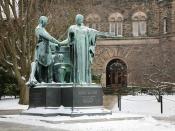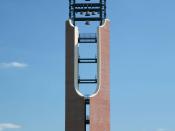Its official: Leonardo da Vinci'sMona Lisa was 83 percent happy, 9 percent disgusted, 6 percent fearful and 2 percent angry. Nicu Sebe at the University of Amsterdam in the Netherlands tested emotion-recognition software on the famous enigmatic smile. His algorithm, developed with researchers at the Beckman Institute at the University of Illinois, Urbana-Champaign, examines key facial features such as the curvature of the lips and crinkles around the eyes, then scores each face with respect to six basic emotions. Sebe drew on a database of young female faces to derive an average "neutral" expression, which the software used as a standard to compare the painting against. Software capable of recognizing human emotions just by looking at photographs or videos could lead to PCs that adjust their response depending on the user's mood, as well as smarter surveillance systems.
I thought this article was very interesting because they finally laid to rest all the controversy about what type of smile Mona Lisa had.
Technology has brought many new interpretations about the human being and their emotions. I believe that this was pretty accurate because the research was done very scientifically and can conclude that the Mona Lisa's smile was truly genuine. The percentages are probably accurate because if you think about what a female model would think about and feel when they are posing for a portrait, this would seem pretty accurate. The model would be 83 percent happy because they were participating in an artistic portrait from a well known and famous artist. She would feel happy because it was probably a great honor to be painted in such a manner. She would probably feel 9 percent disgusted because the artist most likely asked her to smile in a provocative or curious way. She would also feel 6...



In your opinipn
Your opinion is very interesting I dont know if I would totally agree...especially one seeing the portrait with my own eyes and thinking 'her' emtions change the more you look at it and two science is constantly evolving so maybe next week some other percentage of emotion will be detected...but all in all it was an interesting read.
0 out of 0 people found this comment useful.